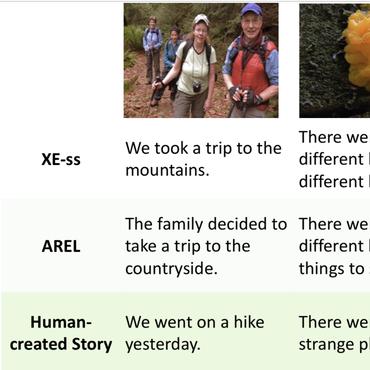Search Results for author: Jiacheng Yang
Found 11 papers, 6 papers with code
MAgent: A Many-Agent Reinforcement Learning Platform for Artificial Collective Intelligence
3 code implementations • 2 Dec 2017 • Lianmin Zheng, Jiacheng Yang, Han Cai, Wei-Nan Zhang, Jun Wang, Yong Yu
Unlike previous research platforms on single or multi-agent reinforcement learning, MAgent focuses on supporting the tasks and the applications that require hundreds to millions of agents.
 Multi-agent Reinforcement Learning
Multi-agent Reinforcement Learning
 reinforcement-learning
+1
reinforcement-learning
+1
Path-Level Network Transformation for Efficient Architecture Search
3 code implementations • ICML 2018 • Han Cai, Jiacheng Yang, Wei-Nan Zhang, Song Han, Yong Yu
We introduce a new function-preserving transformation for efficient neural architecture search.
Learning to Design Circuits
no code implementations • 5 Dec 2018 • Hanrui Wang, Jiacheng Yang, Hae-Seung Lee, Song Han
We propose Learning to Design Circuits (L2DC) to leverage reinforcement learning that learns to efficiently generate new circuits data and to optimize circuits.
Towards Making the Most of BERT in Neural Machine Translation
2 code implementations • 15 Aug 2019 • Jiacheng Yang, Mingxuan Wang, Hao Zhou, Chengqi Zhao, Yong Yu, Wei-Nan Zhang, Lei LI
Our experiments in machine translation show CTNMT gains of up to 3 BLEU score on the WMT14 English-German language pair which even surpasses the previous state-of-the-art pre-training aided NMT by 1. 4 BLEU score.
Park: An Open Platform for Learning-Augmented Computer Systems
1 code implementation • NeurIPS 2019 • Hongzi Mao, Parimarjan Negi, Akshay Narayan, Hanrui Wang, Jiacheng Yang, Haonan Wang, Ryan Marcus, Ravichandra Addanki, Mehrdad Khani Shirkoohi, Songtao He, Vikram Nathan, Frank Cangialosi, Shaileshh Venkatakrishnan, Wei-Hung Weng, Song Han, Tim Kraska, Dr.Mohammad Alizadeh
We present Park, a platform for researchers to experiment with Reinforcement Learning (RL) for computer systems.
GCN-RL Circuit Designer: Transferable Transistor Sizing with Graph Neural Networks and Reinforcement Learning
no code implementations • 30 Apr 2020 • Hanrui Wang, Kuan Wang, Jiacheng Yang, Linxiao Shen, Nan Sun, Hae-Seung Lee, Song Han
Our transferable optimization method makes transistor sizing and design porting more effective and efficient.
OpenUE: An Open Toolkit of Universal Extraction from Text
1 code implementation • EMNLP 2020 • Ningyu Zhang, Shumin Deng, Zhen Bi, Haiyang Yu, Jiacheng Yang, Mosha Chen, Fei Huang, Wei zhang, Huajun Chen
We introduce a prototype model and provide an open-source and extensible toolkit called OpenUE for various extraction tasks.
 Ranked #3 on
Joint Entity and Relation Extraction
on WebNLG
Ranked #3 on
Joint Entity and Relation Extraction
on WebNLG
LOGEN: Few-shot Logical Knowledge-Conditioned Text Generation with Self-training
no code implementations • 2 Dec 2021 • Shumin Deng, Jiacheng Yang, Hongbin Ye, Chuanqi Tan, Mosha Chen, Songfang Huang, Fei Huang, Huajun Chen, Ningyu Zhang
Previous works leverage logical forms to facilitate logical knowledge-conditioned text generation.
AOG-LSTM: An adaptive attention neural network for visual storytelling
no code implementations • Neurocomputing 2023 • Hanqing Liu, Jiacheng Yang, Chia-Hao Chang, Wei Wang, Hai-Tao Zheng, Yong Jiang, Hui Wang, Rui Xie, and Wei Wu
Moreover, the existing method of alleviating error accumulation based on replacing reference words does not take into account the different effects of each word.
 Ranked #20 on
Visual Storytelling
on VIST
Ranked #20 on
Visual Storytelling
on VIST
Minuet: Accelerating 3D Sparse Convolutions on GPUs
1 code implementation • 1 Dec 2023 • Jiacheng Yang, Christina Giannoula, Jun Wu, Mostafa Elhoushi, James Gleeson, Gennady Pekhimenko
Minuet proposes to (i) replace the hash tables used in the Map step with a novel segmented sorting double-traversed binary search algorithm that highly utilizes the on-chip memory hierarchy of GPUs, (ii) use a lightweight scheme to autotune the tile size in the Gather and Scatter operations of the GMaS step, such that to adapt the execution to the particular characteristics of each SC layer, dataset, and GPU architecture, and (iii) employ a padding-efficient GEMM grouping approach that reduces both memory padding and kernel launching overheads.
Accelerating Graph Neural Networks on Real Processing-In-Memory Systems
no code implementations • 26 Feb 2024 • Christina Giannoula, Peiming Yang, Ivan Fernandez Vega, Jiacheng Yang, Yu Xin Li, Juan Gomez Luna, Mohammad Sadrosadati, Onur Mutlu, Gennady Pekhimenko
Graph Neural Network (GNN) execution involves both compute-intensive and memory-intensive kernels, the latter dominates the total time, being significantly bottlenecked by data movement between memory and processors.





